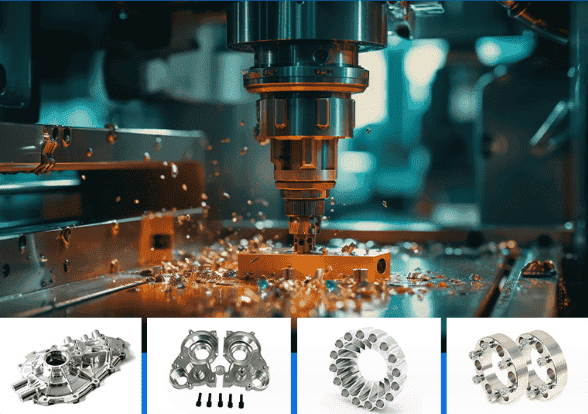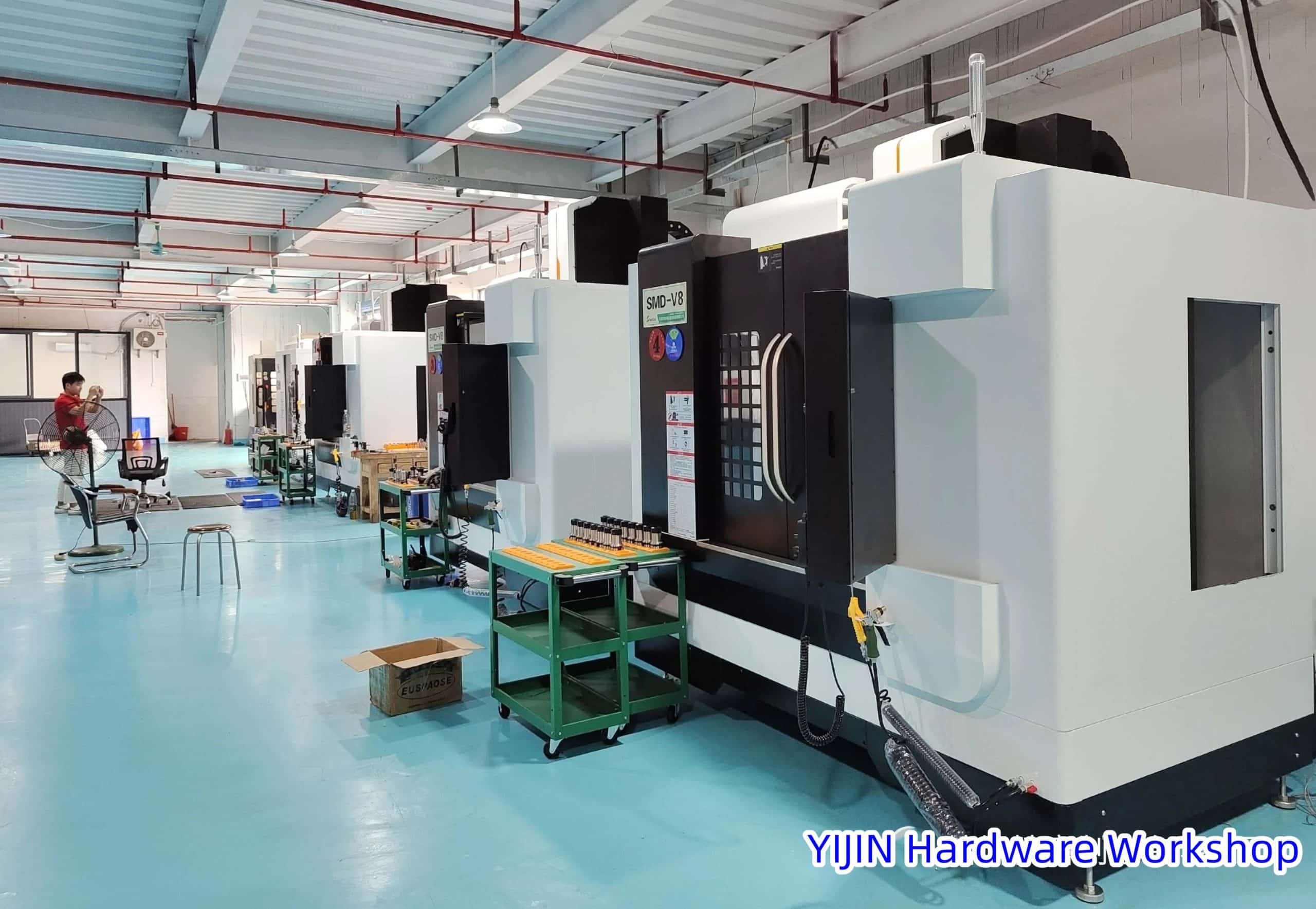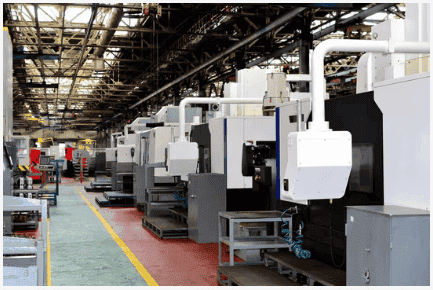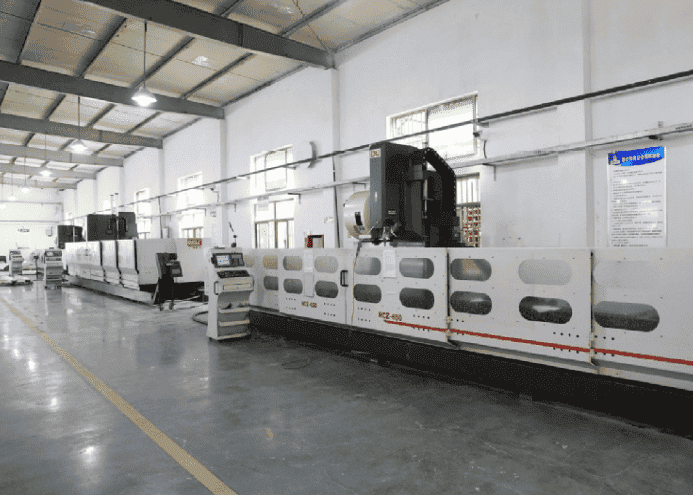Introduction
Metal parts manufacturing is a fundamental and intricate sector within the broader realm of manufacturing industries.
It plays a pivotal role in the creation of countless products that are essential to our daily lives, from automobiles and aerospace components to medical devices and consumer electronics.
This branch of manufacturing involves the fabrication of a wide range of metal components, both simple and complex, using various processes and technologies.
The significance of metal parts manufacturing lies in its ability to shape raw metal materials into precision-engineered components that meet stringent quality and performance standards.
This process encompasses a multitude of techniques, including casting, forging, machining, stamping, and additive manufacturing, among others.
These methods are employed to craft parts of various sizes, shapes, and complexities, each designed to serve specific functions in different applications.
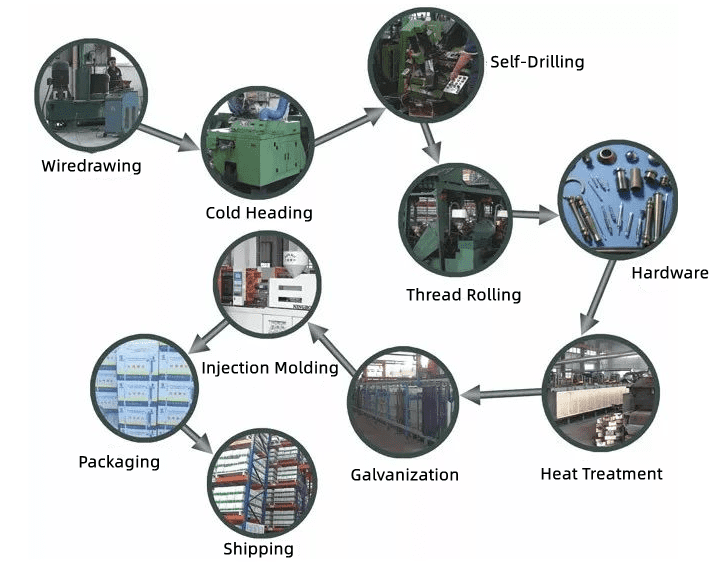
In this introductory exploration of metal parts manufacturing, we will delve into the various processes and technologies involved, the importance of quality control and materials selection, the impact of technological advancements, and the role this industry plays in driving innovation and supporting various sectors of the global economy.
We will also examine the challenges and trends shaping the future of metal parts manufacturing, including sustainability, digitalization, and automation, all of which are poised to revolutionize the way metal parts are designed, produced, and integrated into a wide array of products.
Ultimately, this overview aims to provide a comprehensive understanding of the vital role metal parts manufacturing plays in modern industrial and technological landscapes.
What’s Metal Fabrication?
Metal fabrication is the manufacturing process of creating metal structures by cutting, bending, and assembling different metals.
Construction, automotive, aerospace, industrial, electronics, and many more industries use this adaptable and important manufacturing technique.
Metal fabrication encompasses several key processes and techniques, including cutting, bending, welding, machining, and assembly, among others.
Types of Metal Materials:
There are lots of different types of material in the industry.
Below are the common types of metal materials:
- Hard Metals:
- Hard metals are characterized by their high hardness, which is a measure of their resistance to deformation, wear, and abrasion.
- Common hard metals include:
- Steel: Various types of steel alloys, such as tool steel and stainless steel, are known for their hardness and are used in applications like cutting tools, blades, and industrial equipment.
- Titanium: Titanium alloys are valued for their high strength and resistance to corrosion, making them suitable for aerospace, medical implants, and kitchen appliance applications.
- Hardened Aluminum Alloys: Some aluminum alloys can be heat-treated to increase their hardness and strength for use in aerospace and automotive components.
- Soft Metals:
- Soft metals are characterized by their malleability and ductility, which means they can be easily shaped, formed, and bent without breaking or cracking. These metals are often used in applications requiring flexibility and ease of processing.
- Common soft metals include:
- Aluminum: Aluminum is lightweight, highly malleable, and has excellent corrosion resistance. It is used extensively in the automotive industry, aerospace, construction, and packaging.
- Copper: Copper is a highly conductive and ductile metal used in electrical wiring, plumbing, electronics, and various decorative applications.
- Lead: Lead is a soft, dense metal known for its malleability and resistance to corrosion. It has been used in applications like radiation shielding and battery manufacturing.
- Tin: Tin is a soft, malleable metal used for soldering, plating, and in the production of food packaging materials like tin cans.
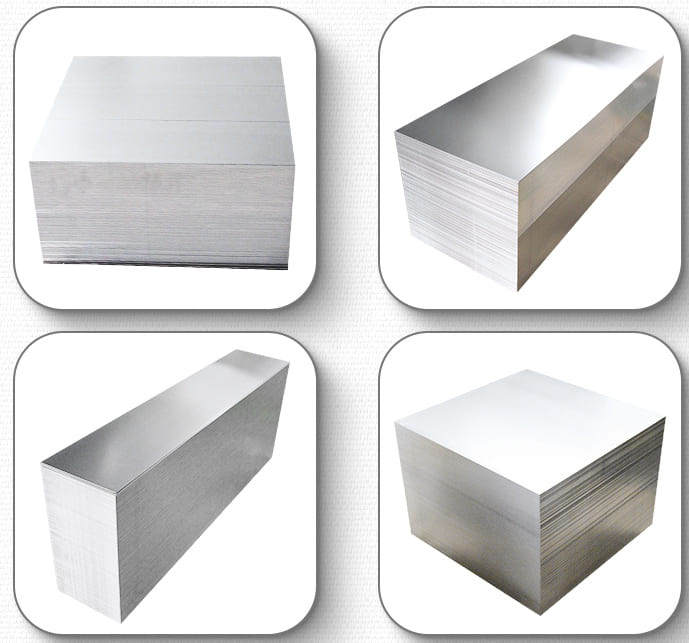
How to Manufacture Metal Parts:
A number of procedures and methods are used during the manufacturing of metal parts to turn raw metal materials into completed products.
The particular manufacturing process chosen is determined by elements such as the type of metal, the part’s complexity, and the intended application:
1) CNC Machining
CNC (Computer Numerical Control) machining is a widely used and precise process to manufacture metal parts.
Below is the standard procedures used in CNC machining:
- Design: Start by creating a thorough CAD (Computer-Aided Design) model of the metal part you wish to produce. This digital design will serve as the blueprint for the CNC machine.
- Material Selection: Choose the appropriate metal material based on your project’s requirements, considering factors like strength, corrosion resistance, and heat resistance.
- CNC Programming: Create a CNC program using CAM (Computer-Aided Manufacturing) software. This program provides instructions to the CNC machine on how to shape the metal part, including toolpaths, tool changes, and cutting speeds.
- Workpiece Setup: Secure the metal workpiece in the CNC machine’s work-holding device, such as a vice, chuck, or fixture, ensuring it is properly aligned and fixed in place.
- Tool Selection: Depending on the material and the part’s geometry, choose the right cutting tools, such as end mills, drills, and reamers. Tools should be well-maintained and sharp.
- Machine Setup: Load the CNC program into the machine’s computer, set the work offsets, and calibrate the tool positions. This ensures accuracy and consistency during machining.
- Machining: The CNC machine precisely follows the programmed toolpaths, cutting and shaping the metal workpiece according to the CAD design.
- Quality Control: Regularly inspect the part during machining to check for dimensional accuracy and surface finish. Adjustments may be made if necessary to maintain quality.
- Secondary Operations: Some parts may require additional processes like deburring, polishing, or heat treatment to achieve the desired final properties and appearance.
- Final Inspection: After machining and any secondary operations, conduct a thorough inspection of the finished metal part to ensure it meets all specified tolerances and quality standards.
- Packaging and Shipping: Once the part passes inspection, it can be cleaned, packaged, and prepared for shipping to the customer or assembly line.
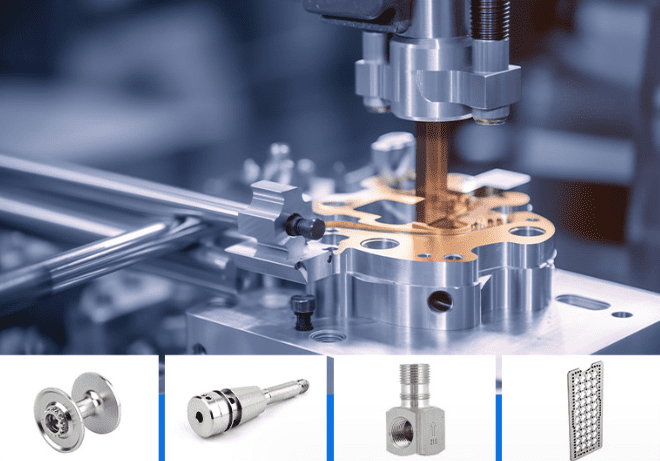
Applications of CNC Machined Metal Parts:
CNC machining has a wide range of applications across various industries, including:
- Aerospace: Manufacturing aircraft components such as engine parts, landing gear, and structural elements with tight tolerances and high precision.
- Automotive: Producing engine components, transmission parts, and custom vehicle modifications with precision and consistency.
- Medical: Manufacturing surgical instruments, orthopedic implants, and medical device components with exacting precision and biocompatible materials.
- Electronics: Creating custom electronic enclosures, heat sinks, and connectors for various electronic devices.
- Tooling and Molds: Crafting molds for injection molding and precision tooling for manufacturing processes.
- Oil and Gas: Producing components for drilling equipment, valves, and connectors with high resistance to corrosion and wear.
- Industrial Equipment: Manufacturing parts for industrial machinery, pumps, and hydraulic systems with durability and precision.
2) Extrusion
Extrusion is a method for producing metal parts that includes forcing metal through a die or mold having a predetermined cross-sectional profile.
This technique is widely used for producing components with consistent shapes and is often employed for materials like aluminum, brass, and steel.
Here’s a brief overview of how metal parts can be manufactured using extrusion:
- Material Selection: Start by selecting the appropriate metal alloy based on the desired properties and end-use requirements of the part. Common choices include aluminum, which is lightweight and corrosion-resistant, and brass, known for its aesthetic appeal and durability.
- Billet Preparation: The chosen metal alloy is initially processed into a cylindrical billet, typically through processes like casting or extrusion billet production. The billet should be heated to a specific temperature, known as the extrusion temperature, to make it more malleable.
- Extrusion Process:
- Die Design: Design a die or mold with the desired cross-sectional shape of the finished part. Dies are usually made from tool steel, and they determine the final geometry of the extruded metal.
- Extrusion Press: Place the heated billet into the extrusion press. The press applies hydraulic pressure to the billet in order to force it through the die. The metal flows through the die’s profile and takes on the desired shape as it exits on the other side.
- Cooling: The extruded part is typically quenched in water or air to cool and harden it quickly. This helps maintain the shape and mechanical properties.
- Cutting and Handling: The extruded metal is cut to the desired lengths using saws or other cutting methods. The cut pieces can then be further processed, if necessary, to meet specific tolerances or surface finish requirements.
- Finishing and Post-Processing: Depending on the application, the extruded parts may undergo additional processes such as machining, heat treatment, anodizing, painting, or other surface treatments to enhance their properties and appearance.
- Quality Control: Implement rigorous quality control measures to ensure the extruded parts meet the required specifications, tolerances, and standards.
Extrusion is a versatile method for manufacturing metal parts, offering benefits like high production efficiency, consistency in shape and size, and the ability to create complex profiles.
It is commonly used in various industries, including automotive, aerospace, construction, and electronics, to produce a wide range of components such as tubing, rods, channels, and structural elements.
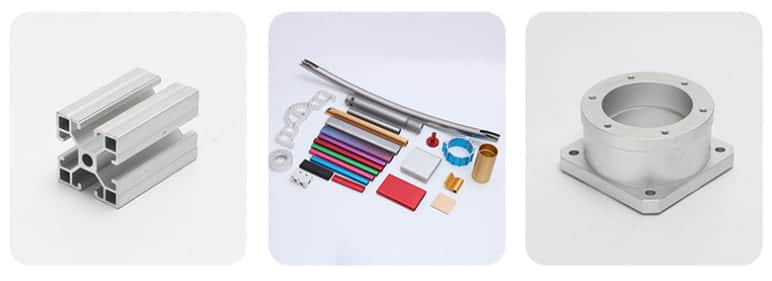
Applications of Extruded Metal Parts
Extruded metal components are utilized in a variety of industries because of their adaptability, affordability, and flexibility in terms of design.
Below are the common applications:
- Architectural: Extruded aluminum profiles are used for window frames, door frames, curtain walls, and structural components in building construction.
- Automotive: Extruded metal parts are found in car frames, bumpers, heat sinks, and structural components due to their lightweight and strength properties.
- Electronics: Heat sinks and chassis for electronic devices are often made using extruded aluminum or other metals for effective heat dissipation and enclosure.
- Aerospace: Aircraft components like fuselage frames, seat tracks, and structural members often utilize extruded aluminum for its lightweight and high strength-to-weight ratio.
- Transportation: Extruded metal parts are used in rail systems, buses, and other forms of transportation for structural components and interior fittings.
- HVAC: Air ducts, heat exchangers, and ventilation systems benefit from the corrosion-resistant and formable nature of extruded metal parts.
- Furniture: Aluminum or steel extrusions are used in the manufacturing of furniture frames, handles, and decorative trim due to their durability and design flexibility.
- Sporting Goods: Bicycle frames, ski poles, and golf club shafts are examples of sporting goods that often feature extruded metal components.
- Appliances: Extruded metal parts are used in the construction of household appliances like refrigerators, ovens, and washing machines.
- Energy: Solar panel frames, wind turbine components, and electrical enclosures often utilize extruded metal parts for their structural integrity and durability.
- Marine: Boat and shipbuilding industries use extruded metal parts for structural components, masts, and railing due to their resistance to corrosion in marine environments.
- Lighting: Lighting fixtures and LED heatsinks frequently incorporate extruded aluminum to dissipate heat and provide structural support.
- Medical Devices: Extruded metal parts are used in medical equipment frames, trays, and casings due to their cleanability and corrosion resistance.
These applications showcase the versatility of extruded metal parts across a wide range of industries, offering solutions for structural support, heat management, and design aesthetics.
3) Stamping
Manufacturing metal parts using stamping is a highly efficient and cost-effective process that involves cutting, bending, or shaping metal sheets or coils into specific forms.
This technique is frequently used to produce components in big volumes with consistent forms. An overview of how metal pieces can be produced via stamping is given below:
- Material Selection: Choose the appropriate metal material, often in the form of sheets or coils. Common materials include steel, aluminum, brass, and stainless steel, depending on the part’s requirements.
- Die Design: Create precise tools, such as dies or molds, with the desired features for the final part’s shape. Dies consist of a punch (which pushes into the metal) and a die (which holds the metal in place). They are typically made from hardened steel.
- Blanking: In the initial step, a sheet of metal is cut into smaller pieces known as blanks or flat shapes, which match the outline of the part. This process is called blanking and is usually the first step in stamping.
- Forming: The blanks are then placed in the stamping press, where they are subjected to high pressure as the punch descends into the die. The metal is bent, folded, or otherwise formed to take on the desired shape. This stage is called forming.
- Piercing or Cutting: In cases where holes or openings are needed in the part, a piercing or cutting operation is performed. This can be done simultaneously with forming or in a separate stage, depending on the complexity of the part.
- Bending: If the part requires bends or angles, the metal is manipulated within the die to achieve the desired geometry. This process is known as bending.
- Drawing: In drawing operations, the metal is stretched to create deeper features or contours.
- Assembly and Finishing: After the stamping process, additional operations such as welding, fastening, painting, or surface treatments may be applied to meet specific part requirements.
- Quality Control: Implement stringent quality control measures to ensure that each stamped part meets dimensional tolerances, surface finish standards, and overall quality specifications.
Stamping is particularly suitable for high-volume manufacturing due to its speed and repeatability.
It is commonly used in industries such as automotive, electronics, appliances, and aerospace to produce components like brackets, brackets, automotive panels, and electronic enclosures.
Proper die design and maintenance are critical to achieving precise and consistent results in metal parts manufacturing through stamping.
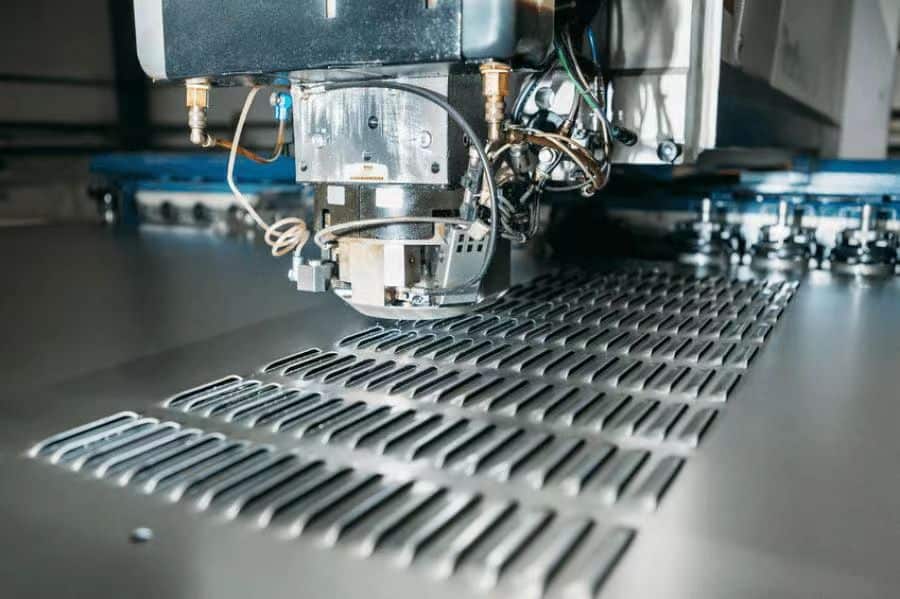
Applications of Stamped Metal Parts
Due to its affordability, precision, and versatility, stamped metal parts are used in a variety of sectors. Here are some common applications:
- Automotive: Stamped metal parts are used in the automotive industry for manufacturing body panels, chassis components, brackets, and engine parts.
- Electronics: Precision stamped parts are employed in electronics for connectors, shielding, contacts, and various internal components.
- Appliances: Stamped metal parts can be found in household appliances like refrigerators, washing machines, and ovens, used for structural components, panels, and door handles.
- Aerospace: The aerospace industry relies on stamped parts for aircraft structural components, seat tracks, and interior fittings due to their lightweight and high strength.
- Construction: Stamped metal parts are used in the construction of structural supports, brackets, and fixtures for buildings and infrastructure.
- Medical Devices: Precision-stamped components are utilized in the manufacturing of medical devices such as surgical instruments, braces, and implantable components.
- Telecommunications: Stamped metal parts are essential for telecommunications equipment like antennas, enclosures, and connectors.
- Furniture: The furniture industry uses stamped metal parts for manufacturing frames, brackets, and decorative trim elements.
- Consumer Goods: Stamped parts are used in various consumer goods, including locks, hinges, fasteners, and decorative elements.
- Toys and Recreational Equipment: Stamped metal parts can be found in toys, sporting equipment, and recreational vehicles for structural and functional components.
- Other Industries: The defense sector utilizes stamped metal parts for manufacturing vehicle components, ammunition casings, and armor plates.
- Rail and Transportation: Stamped parts play a role in the rail and transportation industry for making railcar components, structural elements, and interior fittings.
- Electrical Equipment: Electrical enclosures, contacts, and connectors in electrical equipment often involve stamped metal components.
Stamped metal parts offer design flexibility, cost-efficiency, and high-volume production capabilities, making them essential across a wide range of industries and applications.
4) Forging
Manufacturing metal parts using forging is a process that involves shaping metal by applying compressive force, typically through the use of hammers or presses, to deform the material into the desired form.
Forging is commonly used for producing strong and durable metal components.
Here’s a brief overview of how metal parts can be manufactured using forging, along with some applications:
Forging Process:
- Material Selection: Choose the appropriate metal material, which is typically in the form of a billet or bar stock. Common materials include steel, aluminum, and titanium, depending on the specific application.
- Heating: Heat the metal to an elevated temperature within its forging temperature range to make it more malleable.
- Tooling Design: Design the forging dies or tooling to define the final shape of the part. Dies are made from high-strength steel and consist of two parts: an upper die and a lower die.
- Forging Operation:
- Open-Die Forging: The metal is placed between the dies and repeatedly struck to mold it into the desired shape in open-die forging. For large and intricate pieces, this technique is frequently employed.
- Closed-Die Forging: Closed-die forging, also known as impression die forging, allows for more accurate control of the final shape by enclosing the metal inside the dies. This method is suitable for smaller, intricately shaped components.
- Cooling and Trimming: After forging, the hot metal is typically cooled gradually to relieve stress and prevent cracking. Excess material may be trimmed or removed to achieve the final dimensions.
- Heat Treatment: Depending on the material and the part’s requirements, heat treatment processes like quenching and tempering may be applied to improve hardness, strength, and other mechanical properties.
- Surface Finish: Post-forging operations, such as shot blasting or machining, can be performed to achieve the desired surface finish.
Applications of Forged Metal Parts:
Forged metal parts are known for their strength, durability, and excellent mechanical properties, making them suitable for a wide range of applications, including:
- Automotive: Crankshafts, axles, gears, and connecting rods in automotive engines.
- Aerospace: Aircraft landing gear components, engine parts, and structural elements.
- Oil and Gas: Forged components for drilling equipment, valves, and pipeline fittings.
- Construction: Bolts, fasteners, and structural components in construction projects.
- Defense: Gym hardware, such as artillery shells, tank treads, and gun barrels.
- Industrial Machinery: Forged parts for heavy machinery, mining equipment, and power generation.
- Hand Tools: Forged hand tools like hammers, wrenches, and pliers.
- Sporting Goods: Forged golf club heads, bicycle frames, and firearm components.
- Marine: Forged marine components like propellers, shafts, and ship anchor chains.
For situations where strength and dependability are essential, forging is a recommended option because it produces parts with exceptional structural integrity.
It is a versatile manufacturing method used in various industries to create robust and high-performance metal components.
5) Metal Injection Molding
Metal Injection Molding (MIM), a highly adaptable and accurate method that combines the principles of plastic injection molding with powdered metal technology, is used to manufacture metal products.
MIM is very well suited for manufacturing intricately shaped, tiny, complicated metal components.
Here’s a brief overview of how metal parts can be manufactured using Metal Injection Molding, along with some applications:
Manufacturing Process:
- Feedstock Preparation: MIM begins with the creation of a feedstock mixture. A feedstock is created by combining fine metal powders (usually smaller than 20 micrometers in size) with a binder substance. The binder assists the molding process by holding the metal granules together.
- Injection Molding: The feedstock is pumped into a mold cavity while being heated to a high pressure, similar to plastic injection molding. In the mold, the inverse shape of the required metal item is visible.
- Debinding: After molding, the green part (containing metal and binder) is carefully heated to remove most of the binder material. This step is known as debonding, and it leaves behind a porous metal “brown” part.
- Sintering: The brown part is then sintered in a controlled atmosphere at elevated temperatures (typically close to the metal’s melting point). The leftover binder is eliminated during sintering, and the metal particles combine to form a solid, dense metal part with the appropriate shape and qualities.
- Post-Processing: Depending on the application, post-processing steps such as machining, heat treatment, surface finishing, and coating may be applied to achieve the final specifications.
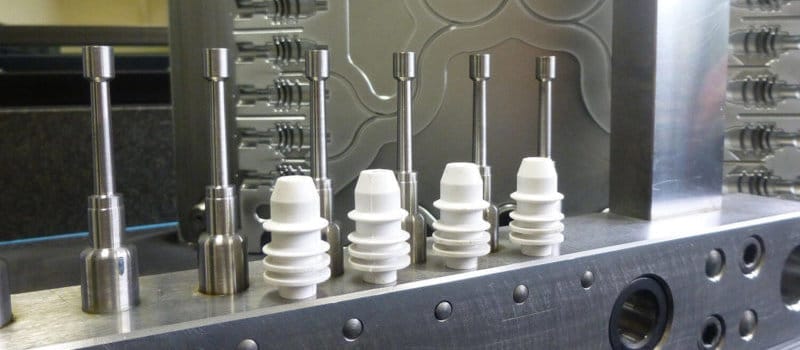
Applications of Injection Molded Metal Parts
- Medical Devices: MIM is used to manufacture surgical instruments, dental implants, orthodontic brackets, and various other medical components due to its precision and biocompatibility.
- Firearms: Many firearm components, such as triggers, hammers, and magazine followers, are produced using MIM for cost-effective, high-precision manufacturing.
- Aerospace: MIM is employed for making aerospace components like brackets, latches, and fuel system parts where lightweight, complex geometry and high strength are crucial.
- Electronics: Connectors, terminals, and other small electronic components benefit from MIM’s ability to produce intricate, high-precision parts in high volumes.
- Automotive: MIM is used in the automotive industry for producing components like gears, pulleys, and sensors, where tight tolerances and complex shapes are required.
- Consumer Goods: Items such as watch components, jewelry, and small hand tools can be manufactured with MIM due to its ability to create intricate and detailed features.
- Industrial Equipment: MIM is used to produce various industrial components, including valves, nozzles, and tooling inserts, where precision and durability are vital.
- Fire Sprinkler Systems: Small, intricate parts in fire sprinkler systems, such as deflector plates, are often manufactured using MIM.
Metal Injection Molding offers the advantage of cost-effective production of small, complex, and high-precision metal parts.
It has gained widespread use across multiple industries, particularly in applications where traditional manufacturing processes may be less efficient or cost-effective.
6) Metal 3D Printing
Producing metal components with metal By layering together components with metal powder and laser or electron beam technology, 3D printing, sometimes referred to as additive manufacturing, is a revolutionary method.
This method offers unique design freedom and is ideal for producing complex and highly customized metal components.
Here’s a brief overview of how metal parts can be manufactured using metal 3D printing, along with some applications:
Manufacturing Process:
- Digital Design: Start with a 3D computer-aided design (CAD) model of the desired part. This digital file serves as the blueprint for the 3D printing process.
- Slicing: Use specialized software to slice the CAD model into thin cross-sectional layers. These slices guide the 3D printer on how to build the part layer by layer.
- Printing: The 3D printer deposits a thin layer of metal powder (typically aluminum, titanium, stainless steel, or Inconel) and then selectively fuses it using a high-energy laser or electron beam. This process repeats layer by layer until the entire part is created.
- Cooling and Support Structures: As each layer solidifies, support structures may be added to help with stability during printing. After printing, the part is typically allowed to cool slowly in the build chamber.
- Post-Processing: To meet certain material and performance criteria, the part can need post-processing procedures after printing, such as heat treatment, stress relief, and surface finishing.
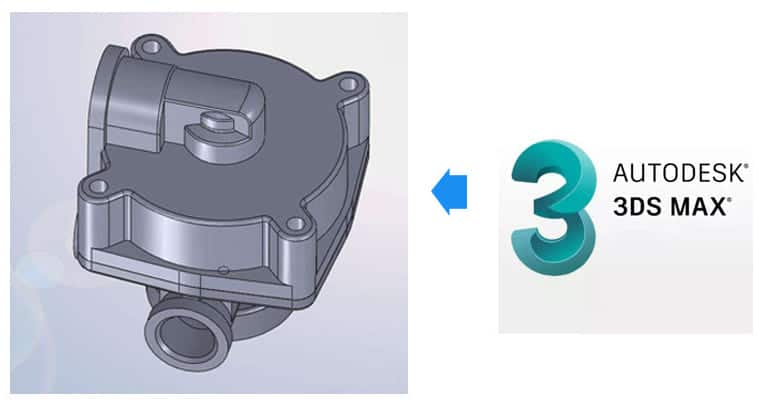
Applications of 3D Printed Metal Parts
- Aerospace: Metal 3D printing is used to produce complex aerospace components like turbine blades, lightweight structural parts, and intricate fuel nozzles, reducing weight and improving fuel efficiency.
- Medical: Custom implants, orthopedic devices, and dental prosthetics are made using metal 3D printing, allowing for patient-specific designs and improved compatibility.
- Automotive: The automotive industry employs metal 3D printing for prototyping, custom components, and lightweight parts, enhancing vehicle performance and efficiency.
- Energy: In the energy sector, metal 3D printing is used to manufacture turbine components, heat exchangers, and parts for renewable energy systems like wind turbines and solar panels.
- Tooling: Complex tooling and molds are produced using metal 3D printing, enabling faster prototyping and production of precision parts.
- Defense: The defense industry uses 3D printing for producing food-grade components, such as aircraft parts, missile components, and armor.
- Electronics: 3D printing is used for creating heat sinks, connectors, and customized electronic components with complex geometries.
- Research and Development: Many industries leverage metal 3D printing for rapid prototyping and testing of new designs and concepts.
Metal 3D printing offers unparalleled design freedom and the ability to produce parts with complex geometries, reduced material waste, and rapid turnaround times.
However, it’s important to note that the process can be expensive and is typically reserved for applications where these advantages outweigh the cost considerations.
Surface Finish Options for Metal Parts:
Surface finish options for metal parts play a crucial role in determining the aesthetics, functionality, and performance of the finished product. Here are some common surface finish options for metal parts:
- Mill Finish: This is the default finish straight from the machining or manufacturing process, often characterized by visible tool marks and a slightly rough texture.
- Polishing: Abrasives are used in polishing to remove surface flaws and produce a shiny, smooth finish. It’s commonly used for decorative and high-end applications, such as jewelry and automotive components.
- Brushed Finish: This finish involves brushing the metal surface with abrasive material to create fine, consistent parallel lines. It’s often used for decorative trim on appliances and architectural elements.
- Anodizing: Anodizing often produces a protective oxide layer on the surface of aluminum. It enhances corrosion resistance, improves appearance, and can introduce color options.
- Electroplating: Electroplating involves depositing a layer of another metal (like chrome, nickel, or zinc) onto the base metal. It improves corrosion resistance, provides a shiny finish, and can introduce unique colors.
- Chemical Passivation: Often used for stainless steel parts, passivation removes iron particles and contaminants from the surface to improve corrosion resistance.
- Blasting: Abrasive blasting, like sandblasting, can create a textured or matte finish on metal surfaces. It’s useful for creating a non-reflective finish or preparing surfaces for coatings.
- Laser Etching/Engraving: Laser technology can be used to engrave patterns, logos, or text onto metal surfaces, adding both functionality and aesthetic appeal.
- Chemical Treatments: Various chemical treatments can be applied to achieve specific surface properties, such as phosphate coating for improved paint adhesion or black oxide for enhanced corrosion resistance and aesthetics.
Choosing the right surface finish depends on factors like the intended use of the part, material type, appearance requirements, and environmental conditions.
It’s essential to select the appropriate finish to ensure the longevity and performance of your metal parts.
Yijin Solution Helps with Custom Metal Parts:
Yijin Solution Company specializes in custom metal parts manufacturing, providing tailored solutions to meet your unique needs. We offer:
Precision Engineering: Our expert team uses state-of-the-art technology to ensure precise and accurate metal part production.
Material Expertise: We work with a variety of metals, from aluminum to stainless steel, and we can suggest the finest one for your particular use.
Customization: Every project is special to us, thus we customize our manufacturing to meet your particular requirements.
Prototyping: We can quickly create prototypes for testing and validation, helping you refine your designs before full-scale production.
Quality Assurance: You will only receive parts of the highest caliber that comply with industry requirements thanks to our strict quality control procedures.
Timely Delivery: To keep your project on schedule and reduce downtime, we place a high priority on on-time delivery.
With Yijin Solution Company, you can count on reliable and customized metal parts manufacturing for your specific requirements.
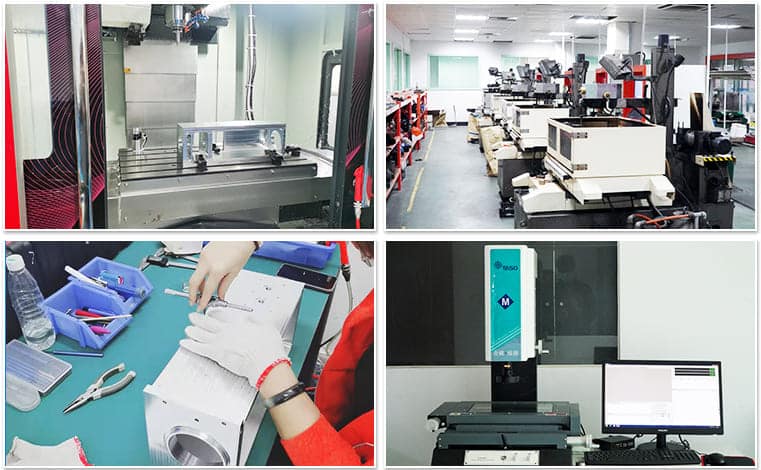
Conclusion
In conclusion, custom metal parts manufacturing offers a versatile range of options to meet specific requirements in various industries.
By understanding your project needs, material choices, and surface finish requirements, you can create precise, durable, and tailored metal components.
Whether it’s for prototyping, production runs, or one-of-a-kind pieces, the ability to customize metal parts ensures the optimal performance and functionality of your products.
Collaborating with experienced manufacturers can help streamline the process and deliver high-quality, cost-effective solutions for your unique applications.
 Call Us Today! (+86) 188-2253-7569
Call Us Today! (+86) 188-2253-7569